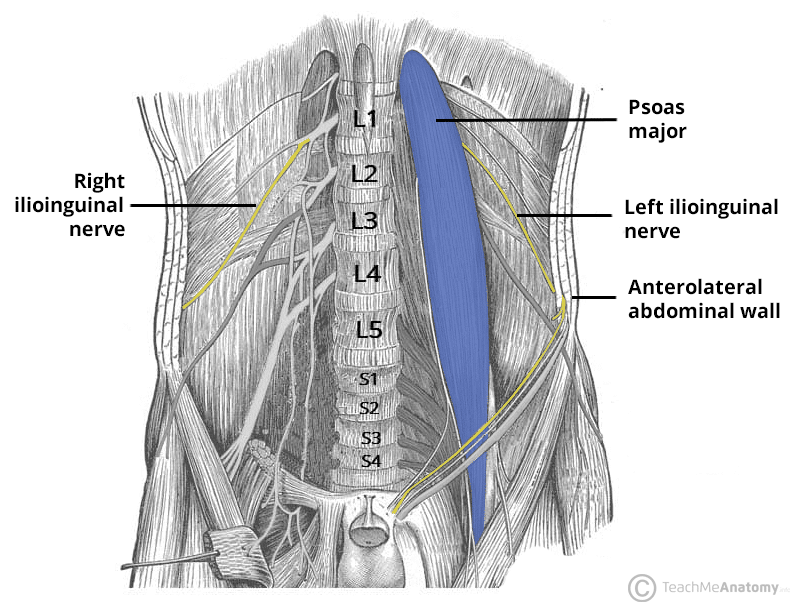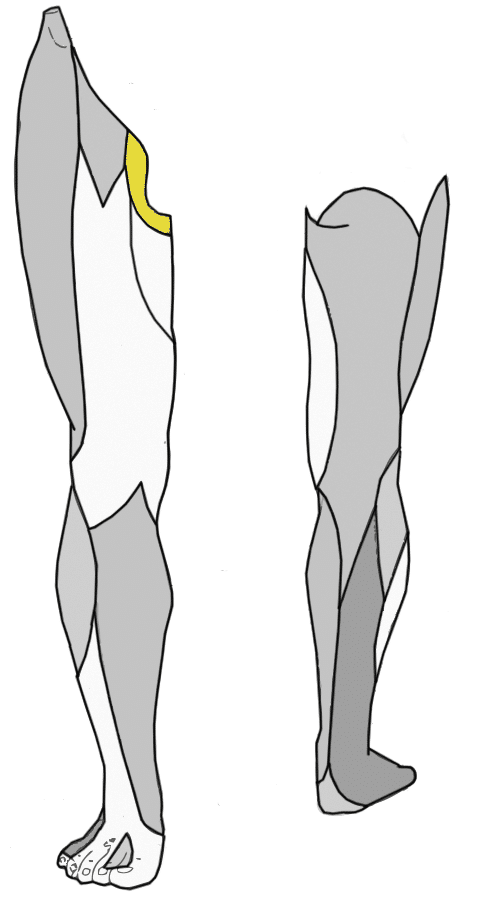The ilioinguinal nerve is a nerve of the anterior abdominal wall, pelvis, and upper thigh.
It supplies motor branches to the abdominal wall and contributes to the sensory innervation of the anteromedial thigh and genitalia.
Course
The ilioinguinal nerve arises from the lumbar plexus within the posterior abdomen. It is formed by the anterior ramus (division) of the L1 spinal nerve.
After its origin, the nerve emerges from the lateral border of the psoas major muscle. It then travels inferolaterally to enter the abdominal wall near the anterior superior iliac spine.
The ilioinguinal nerve passes through the anterolateral abdominal wall and supplies motor branches to the internal oblique and transversus abdominus.
It then enters the inguinal canal via the superficial inguinal ring to innervate the skin of the genitalia and anteromedial thigh.
Motor Function
The ilioinguinal nerve provides motor innervation to the internal oblique and transversus abdominus – muscles of the anterolateral abdominal wall.
Bilateral contraction of these muscles acts to compress the abdominal contents, whilst unilateral contraction ipsilaterally rotates the torso.
Sensory Function
The ilioinguinal nerve innervates the skin of the superior anteromedial thigh (overlying the medial aspect of the femoral triangle).
It also contributes to sensation of the genitalia:
- Male – skin of anterior scrotum
- Female – skin of labia majora and mons pubis

